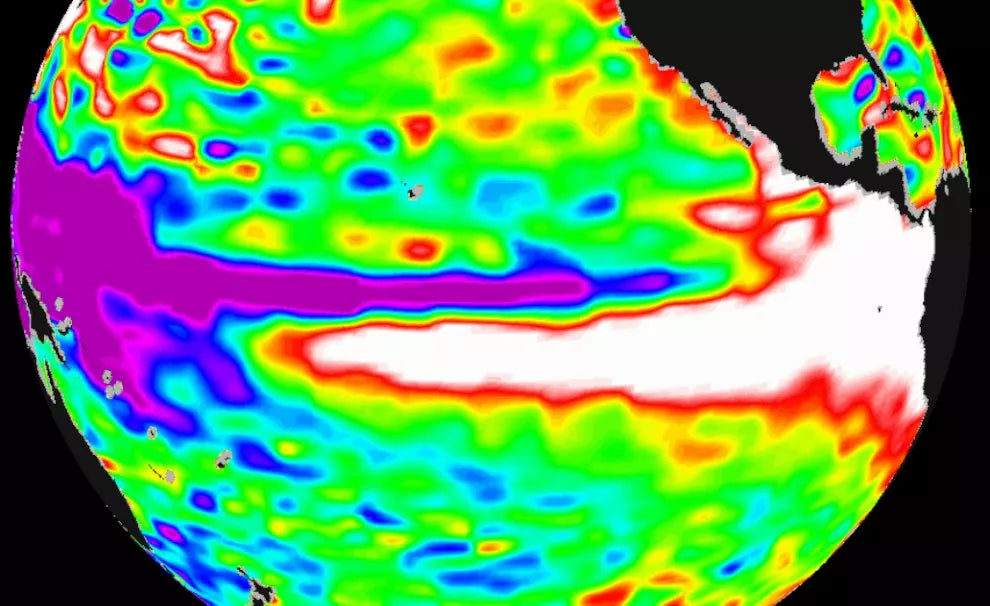
Demystifying El Niño: How It Shapes Weather and Impacts Marine Life
Share
Weather patterns are a fascinating puzzle, and one of the most captivating pieces is El Niño. El Niño, which means "the little boy" in Spanish, is a weather phenomenon originating in the tropical Pacific Ocean but exerting its influence worldwide. In this blog, we'll dive into the intricacies of El Niño weather patterns and explore how they impact marine life when it's relevant.
Cracking the El Niño Code
El Niño is like a character in the larger climate story called the El Niño-Southern Oscillation (ENSO). It signifies the warm phase of this cycle, while La Niña represents the cool phase. These El Niño events don't stick to a strict schedule; they happen irregularly, roughly every 2 to 7 years, and can last from a few months to well over a year.
Here's what defines El Niño:
1. Ocean Heatwave: The most obvious sign of El Niño is the abnormal warming of sea surface temperatures in the central and eastern tropical Pacific Ocean.
2. Upended Atmosphere: El Niño plays havoc with normal atmospheric circulation patterns, leading to unusual weather conditions across the globe.
Impacting the Underwater World
1. Fishing Frenzy: When El Niño strikes, it shakes up the marine environment, significantly affecting fisheries. The warm surface waters can disrupt the normal distribution and abundance of fish species, hitting both commercial and subsistence fishing hard.
2. Coral Crisis: The rising sea temperatures during El Niño events can spell trouble for coral reefs. Corals are pretty sensitive to temperature swings, and when stressed, they kick out the helpful algae that provide their nourishment. The result is coral bleaching, causing reefs to lose their vibrant colors and, in the worst cases, wither away.
3. Ecosystem Shuffle: The disturbance El Niño brings can reshape marine ecosystems. Think kelp forests and coral reefs. Some species may thrive in the new conditions, while others may struggle.
4. Species on the Move: The fluctuating ocean temperatures and currents during El Niño events can trigger migrations of marine species as they seek more hospitable habitats. This has repercussions on local ecosystems and the livelihoods of those who rely on them.
5. Stormy Seas: El Niño can also lead to ramped-up tropical storm activity in various regions worldwide. This increased storm intensity can have devastating consequences for coastal ecosystems and habitats.
El Niño is a captivating and intricate weather phenomenon with broad effects on both land and sea. Although its primary impact is felt in the atmosphere and weather patterns, it ripples out to affect marine life, including fisheries, coral reefs, and the very ecosystems of the ocean. Comprehending these connections is critical for scientists and decision-makers as they strive to manage the consequences of El Niño and safeguard our precious oceans.
Here are some resources that you can explore to learn more about El Niño and its impacts:
Here are some helpful resources to learn more about El Niño weather patterns:
- NOAA El Niño Portal - Detailed explanation from the National Oceanic and Atmospheric Administration on what El Niño is, how it forms, and its impacts: https://www.climate.gov/enso
- National Geographic El Niño Guide - Visual breakdown of how El Niño affects global weather and climate: https://www.nationalgeographic.org/encyclopedia/el-nino/
- Met Office El Niño Guide - Overview from the UK Met Office on the science behind El Niño and researching its effects: https://www.metoffice.gov.uk/research/climate/seasonal-to-decadal/gpc-outlooks/el-nino-la-nina/enso-description

